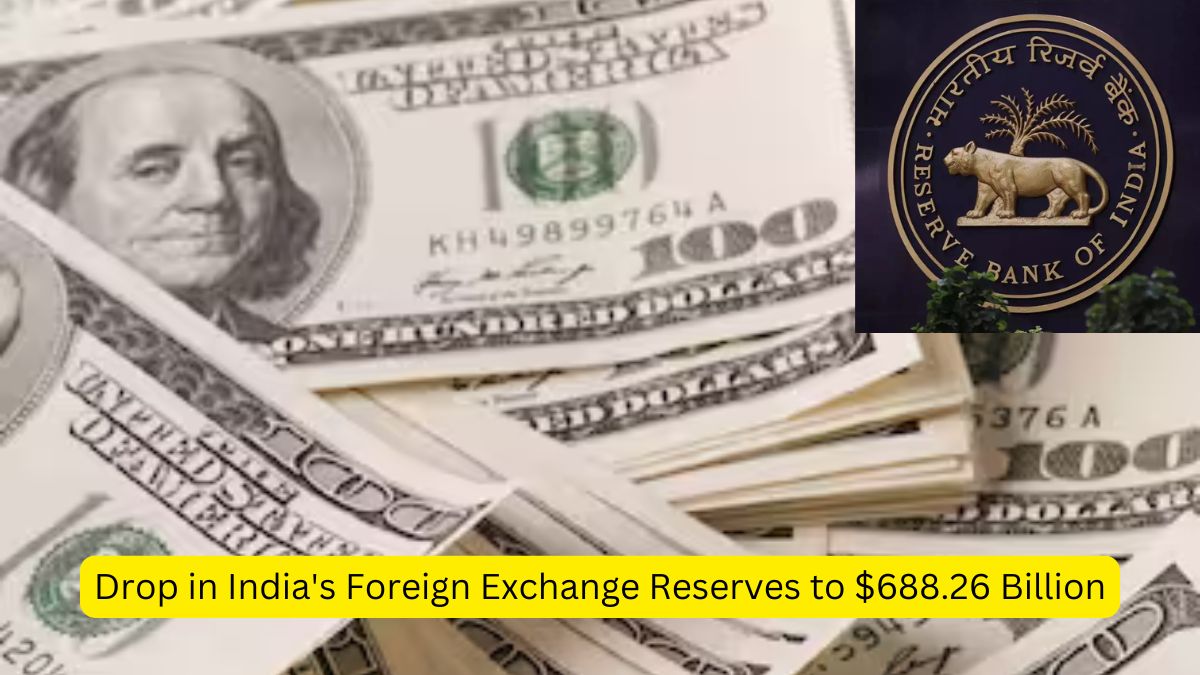India’s foreign exchange reserves decreased by $2.163 billion, bringing the total to $688.267 billion for the week ending October 18, as reported by the Reserve Bank of India. This decline follows a significant drop of $10.746 billion in the previous week, marking one of the largest reductions in reserves in recent times.
Overview
Current Status
- As of October 18, India’s foreign exchange reserves fell by $2.163 billion, totaling $688.267 billion, according to the Reserve Bank of India (RBI).
Recent Trends
- The previous week saw a significant drop of $10.746 billion, bringing reserves down to $690.43 billion.
- Prior to that, reserves had decreased by $3.709 billion to $701.176 billion.
- Reserves reached an all-time high of $704.885 billion at the end of September.
Components of Reserves
- Foreign Currency Assets: A key component of forex reserves decreased by $3.865 billion to $598.236 billion.
- These assets reflect the value of currencies held, affected by the appreciation or depreciation of non-US currencies such as the euro, pound, and yen.
- Gold Reserves: Increased by $1.786 million, now valued at $67.444 billion.
Other Indicators
- Special Drawing Rights (SDRs): Decreased by $68 million to $18.271 billion.
- Reserve Position with IMF: Dropped by $16 million to $4.316 billion.
About Foreign Exchange Reserves
- Foreign Exchange Reserves (Forex Reserves) are assets held by a central bank in foreign currencies.
- These reserves may include various forms of assets such as foreign currencies, bonds, treasury bills, and government securities.
Custodian
- The Reserve Bank of India (RBI) is the custodian of India’s foreign exchange reserves.
Components of India’s Forex Reserves
Foreign Currency Assets (FCAs)
Maintained in various currencies including,
- US Dollar
- Euro
- Pound Sterling
- Australian Dollar
- Japanese Yen
Gold Reserves
- Physical gold held by the central bank.
Special Drawing Rights (SDRs)
- A reserve currency allocated by the International Monetary Fund (IMF).
Reserve Tranche Position (RTP)
- The reserve capital held with the IMF.
Purpose
- They are used to back liabilities on their own issued currency, support the exchange rate and set monetary policy.
- To ensure that RBI has backup funds if their national currency rapidly devalues or becomes altogether insolvent.
- If the value of the Rupee decreases due to an increase in the demand of the foreign currency, then RBI sells the dollar in the Indian money market so that depreciation of the Indian currency can be checked.
- A country with a good stock of forex has a good image at the international level because the trading countries can be sure about their payments.
- A good forex reserve helps in attracting foreign trade and earns a good reputation with trading partners.
| Summary/Static | Details |
| Why in the news? | India’s foreign exchange reserves decreased by $2.163 billion, bringing the total to $688.267 billion for the week ending October 18 |
| All-Time High | $704.885 billion at the end of September |
| Components of Reserves | Foreign Currency Assets (FCA) – $598.236 billion (decrease of $3.865 billion)
Gold Reserves – $67.444 billion (increase of $1.786 million) Special Drawing Rights (SDRs) – $18.271 billion (decrease of $68 million) Reserve Position with IMF – $4.316 billion (decrease of $16 million) |
| Custodian of Forex Reserves | Reserve Bank of India (RBI) |
| Purpose of Forex Reserves | – Back liabilities on issued currency
– Support exchange rate and monetary policy – Prevent rapid devaluation of the rupee – Enhance international trade credibility and attract foreign investment |




 India’s Growth Seen at 6.9% in FY27 Desp...
India’s Growth Seen at 6.9% in FY27 Desp...
 India’s Forex Reserves Strengthen Near $...
India’s Forex Reserves Strengthen Near $...
 GST Collections Jump 6.1% in December 20...
GST Collections Jump 6.1% in December 20...







